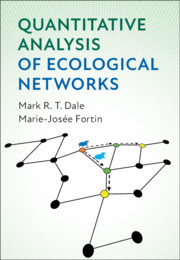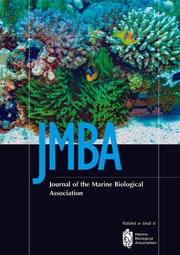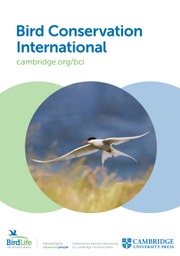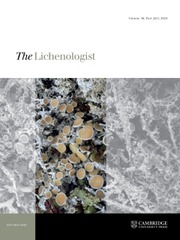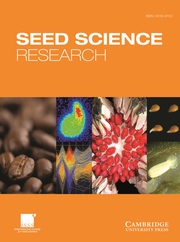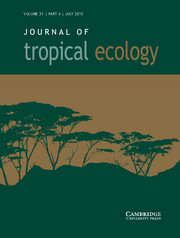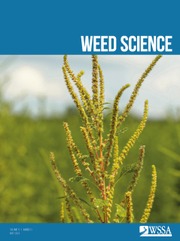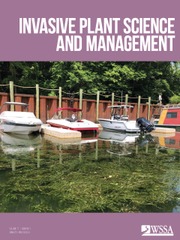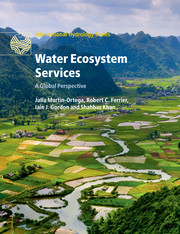Invasion Biology and Ecological Theory
Insights from a Continent in Transformation
£67.99
- Editors:
- Herbert H. T. Prins, Wageningen Universiteit, The Netherlands
- Iain J. Gordon, The James Hutton Institute, Scotland
- Date Published: January 2014
- availability: In stock
- format: Hardback
- isbn: 9781107035812
£
67.99
Hardback
Other available formats:
eBook
Looking for an inspection copy?
This title is not currently available on inspection
-
Many conservationists argue that invasive species form one of the most important threats to ecosystems the world over, often spreading quickly through their new environments and jeopardising the conservation of native species. As such, it is important that reliable predictions can be made regarding the effects of new species on particular habitats. This book provides a critical appraisal of ecosystem theory using case studies of biological invasions in Australasia. Each chapter is built around a set of eleven central hypotheses from community ecology, which were mainly developed in North American or European contexts. The authors examine the hypotheses in the light of evidence from their particular species, testing their power in explaining the success or failure of invasion and accepting or rejecting each hypothesis as appropriate. The conclusions have far-reaching consequences for the utility of community ecology, suggesting a rejection of its predictive powers and a positive reappraisal of natural history.
Read more- Detailed descriptions of plant and animal invasions in Australasia give readers a valuable insight into how alien species can affect an entire continent
- Proposes a re-examination of ecology at the ecosystem level, emphasising the importance of natural history
- Provides a broad review of the processes underlying biological invasions that is relevant to ecosystems across the globe
Reviews & endorsements
'This book represents a novel and exciting approach to testing some fundamental ecological ideas such as the niche concept, competition, disturbance, and life history strategy. It does so using invasive alien species, with Australia as both the invaded environment, as well as the source of the invasives. The approach taken is to propose a series of ecological hypotheses and test these against invader case studies ranging from the failed (finches) to the downright spectacular (water buffalo in Northern Australia). A series of specialist authors tackles each case study, before the editors, Prins and Gordon, conclude with a synthesis chapter that reviews the evidence for and against each hypothesis, drawing on each author's findings in a structured way. The principal intent of this book is to inform the science of ecology, but it is rich in valuable insights to those grappling with the management of this great threat to global biodiversity.' Mark Lonsdale, Commonwealth Scientific and Industrial Research Organisation, Canberra
See more reviews'This book is both a reasoned call to action and a healthy antidote to hubris. Prins and Gordon assembled a team of authors to examine the history of biological invasions in Australia and undertake a bold test of what we think we know about invasion biology. They distilled that body of theory into eleven hypotheses about invasions in general, and each author tested the hypotheses independently using different historical and recent examples. Have a stiff drink ready for when you finish this book because it will shake your confidence in the idea that conservationists can or even should try to make predictions based on ecological theory. This is not as nihilistic a conclusion as might be assumed though because they also found the fate of invasive biota likely does not seem to simply be determined by chance either.' Conservation Biology
Customer reviews
Not yet reviewed
Be the first to review
Review was not posted due to profanity
×Product details
- Date Published: January 2014
- format: Hardback
- isbn: 9781107035812
- length: 540 pages
- dimensions: 253 x 180 x 33 mm
- weight: 1.11kg
- contains: 61 b/w illus. 27 tables
- availability: In stock
Table of Contents
List of contributors
Foreword Charles J. Krebs
1. Testing hypotheses about biological invasions and Charles Darwin's two-creators rumination Herbert H. T. Prins and Iain J. Gordon
Part I. Ancient Invaders:
2. Australia's Acacia: unrecognized convergent evolution Joseph T. Miller and Martin Burd
3. The mixed success of Mimosoideae clades invading into Australia Kyle W. Tomlinson
4. Perspectives from parrots on biological invasions Leo Joseph
5. Invasion ecology of honeyeaters Janette A. Norman and Leslie Christidis
6. The invasion of terrestrial fauna into marine habitat: birds in mangroves David Luther
7. Biological invasions of Sirenia in relation to ecosystem theory Hans H. de Iongh and Daryl P. Domning
8. Flying-foxes and drifting continents David A. Westcott and Adam McKeown
9. Invasion ecology of Australasian marsupials Christopher R. Dickman
10. Murine rodents - late but highly successful invaders Ken Aplin and Fred Ford
11. Drift of a continent - broken connections Carol Ann Stannard
12. The development of a climate - an arid continent with wet fringes Sandra McLaren, Malcolm W. Wallace, Stephen J. Gallagher, Barbara E. Wagstaff and Anne-Marie P. Tosolini
Part II. Modern Invaders:
13. Invasion of woody shrubs and trees Kris French, Ben Gooden and Tanya Mason
14. Modern tree colonisers from Australia into the rest of the world Trevor H. Booth
15. Failed introductions - finches from outside Australia Jan Komdeur and Martijn Hammers
16. The skylark Judit K. Szabo
17. Why Northern Hemisphere waders did not colonise the south Ken Kraaijeveld
18. Weak migratory interchange by birds between Australia and Asia David Roshier and Leo Joseph
19. Introducing a new top predator, the dingo Christopher N. Johnson and Mike Letnic
20. The European rabbit - Australia's worst mammalian invader Steven R. McLeod and Glen Saunders
21. The rise and fall of the Asian water buffalo in the monsoonal tropics of Northern Australia Patricia A. Werner
22. A critique of community ecology and a salute to natural history Herbert H. T. Prins and Iain J. Gordon
Index.
Sorry, this resource is locked
Please register or sign in to request access. If you are having problems accessing these resources please email [email protected]
Register Sign in» Proceed
You are now leaving the Cambridge University Press website. Your eBook purchase and download will be completed by our partner www.ebooks.com. Please see the permission section of the www.ebooks.com catalogue page for details of the print & copy limits on our eBooks.
Continue ×Are you sure you want to delete your account?
This cannot be undone.
Thank you for your feedback which will help us improve our service.
If you requested a response, we will make sure to get back to you shortly.
×



